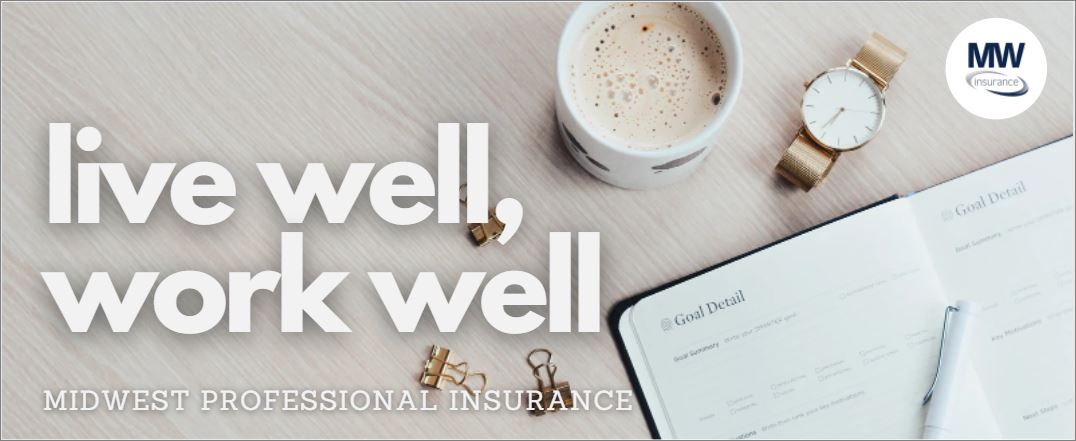On Sept. 24, 2021, the Safer Federal Workforce Task Force (Task Force) released new guidance (the Guidance) on COVID-19 workplace safety protocols for federal contractors and subcontractors. The goal of the Guidance is to get more people vaccinated.
The Guidance requires each covered contract and contract-like instrument to include a clause requiring the contractor and their subcontractors to comply with all guidelines for workplace locations published by the Task Force.
These workplace safety protocols will apply to all covered contractor employees, including contractor or subcontractor employees in covered contractor workplaces who are not working on a federal government contract or contract-like instrument.
Federal contractors and subcontractors with a covered contract will be required to conform to the following workplace safety protocols:
- COVID-19 vaccination;
- Masking and physical distancing; and
- and Appointment of COVID-19 coordinators
Action Steps
Covered contractors must review and adhere to the requirements of the Guidance. They are also responsible for ensuring that covered contractor employees comply with workplace safety protocols.
Visit our blog page to read the full COVID-19 Workplace Safety Guidance for Federal Contractor and Subcontractors
https://www.mwpins.com/blog/
Covered Contractor Guidance
Covered contractor employees must comply with agency COVID-19 workplace safety requirements while in federal workplaces. Agencies are strongly encouraged to incorporate a clause requiring compliance with this Guidance into contracts that are not covered or directly addressed by the executive order—Ensuring Adequate COVID-19 Safety Protocols for Federal Contractors (the order) because the contractor is under the Simplified Acquisition Threshold as defined in section 2.101 of the Federal Acquisition Regulation (FAR) or is a contract or subcontract for the manufacturing of products.
Covered Contractors
Federal contractors are subject to the Guidance if they have a covered contract. Covered contractors include executive departments and agencies, including independent establishments subject to the Federal Property and Administrative Services Act.
Covered contracts include any new contract; contract-like instrument; solicitation for a contract or contract-like instrument; extension or renewal of an existing contract or contract-like instrument; and exercise of an option on an existing contract or contract-like instrument, if it is a:
- Procurement contract or contract-like instrument for services, construction, or a leasehold interest in real property;
- Contract or contract-like instrument for services covered by the Service Contract Act, 41 U.S.C. 6701 et seq.;
- Contract or contract-like instrument for concessions, including any concessions contract excluded by Department of Labor regulations at 29 C.F.R. 4.133(b); or
- Contract or contract-like instrument entered into with the federal government in connection with federal property or lands and related to offering services for federal employees, their dependents, or the general public.
The Guidance does not apply to (i) grants; (ii) contracts, contract-like instruments, or agreements with Indian Tribes under the Indian Self-Determination and Education Assistance Act (Public Law 93-638), as amended; (iii) contracts or subcontracts whose value is equal to or less than the simplified acquisition threshold, as the term is defined in section 2.101 of the Federal Acquisition Regulation; (iv) employees who perform work outside the United States or its outlying areas, as those terms are defined in section 2.101 of the Federal Acquisition Regulation; or (v) subcontracts solely for the provision of products.
Vaccination Requirements
Covered contractors must ensure that all covered contractor employees are fully vaccinated for COVID-19 unless the employee is legally entitled to an accommodation. Covered contractor employees must be fully vaccinated no later than Dec. 8, 2021. After that date, all covered contractor employees must be fully vaccinated by the first day of the period of performance on an exercised option or extended or renewed contract when the clause has been incorporated into the covered contract.
Covered contractors may be required to provide accommodations to covered contractor employees who communicate to their covered contractor that they are not vaccinated against COVID-19 because of a disability (which would include medical conditions) or a sincerely held religious belief, practice, or observance. Covered contractors should review and consider what accommodations they must offer. Requests for “medical accommodation” or “medical exceptions” should be treated as requests for disability accommodations.
Should a federal agency have an urgent, mission-critical need for a covered contractor to have covered contractor employees begin work on a covered contract or at a covered workplace before becoming fully vaccinated, the agency head may approve an exception for the covered contractor. In the case of such limited exceptions, covered contractors must ensure these covered contractor employees are fully vaccinated within 60 days of beginning work on a covered contract or at a covered workplace. Covered contractors must further ensure that such employees comply with masking and physical distancing requirements in covered workplaces prior to being fully vaccinated.
Covered contractors must review their covered employees’ documentation to prove vaccination status. Covered contractors must require covered contractor employees to show or provide one of the following copies:
- The record of immunization from a health care provider or pharmacy;
- The COVID-19 vaccination record card;
- Medical records documenting the vaccination;
- Immunization records from a public health or State immunization information system; or
- Any other official documentation verifying vaccination with information on the vaccine name, date(s) of administration, and the name of health care professional or clinic site administering vaccine.
Covered contractors may allow covered contractor employees to show or provide their employer with a digital copy of such records, including a:
- Digital photo;
- Scanned image; or
- PDF of such a record.
Covered contractors must ensure compliance with the requirements in this Guidance related to the showing or provision of proper vaccination documentation. They are strongly encouraged to incorporate similar vaccination requirements into their non-covered contracts and agreements with noncovered contractors whose employees perform work at covered contractor workplaces but who do not work on or in connection with a federal contract (e.g., such as those contracts and agreements related to the provision of food services, on-site security or grounds keeping services at covered contractor workplaces).
Face Coverings and Physical Distancing
Covered contractors must ensure that all individuals, including covered contractor employees and visitors, comply with published Centers for Disease Control and Prevention (CDC) guidance for masking and physical distancing at a covered contractor workplace. In addition to the face coverings and physical distance guidance, contractors must follow applicable CDC guidance for mask-wearing and physical distancing in specific settings, including health care, transportation, correctional and detention facilities, and schools.
Fully vaccinated individuals must wear a mask in indoor settings, except for limited exceptions in areas of high or substantial community transmission. In addition, fully vaccinated individuals do not need to wear a mask in areas of low or moderate community transmission, nor do they need to physically distance, regardless of the level of transmission in the area.
Individuals who are not fully vaccinated must wear a mask indoors and in certain outdoor settings, regardless of the level of community transmission in the area. To the extent practicable, individuals who are not fully vaccinated should maintain a distance of at least 6 feet from others at all times, including in offices, conference rooms, and all other communal and workspaces.
Covered contractors must require individuals in covered contractor workplaces who are required to wear a mask to:
- Wear appropriate masks consistently and correctly (over mouth and nose).
- Wear appropriate masks in any common area or shared workspace (including open floorplan office spaces, cubicle embankments, and conference rooms).
- Wear a mask in crowded outdoor settings or during outdoor activities that involve sustained close contact with other people who are not fully vaccinated, consistent with CDC guidance.
Covered contractors may be required to provide an accommodation to covered contractor employees that cannot wear masks because of a disability or because of a sincerely held religious belief, practice, or observance. Covered contractors should review and consider what accommodation they must offer. Covered contractors may provide exceptions to face covering and/or physical distancing requirements consistent with CDC guidelines. They may also provide exceptions for covered contractor employees who are unable to wear a mask because of difficulty breathing or activities for which wearing a mask would create a risk to workplace safety as determined by a workplace risk assessment. Any exceptions must be approved in writing by an authorized representative of the covered contractor to ensure compliance with this Guidance at covered contractor workplaces.
Employees with face coverings may be asked to lower their face coverings briefly for identification purposes in compliance with safety and security requirements. At least weekly, covered contractors must check the CDC COVID-19 Data Tracker County View for community transmission information in all areas with a covered contractor workplace to determine proper workplace safety protocols. When the level of community transmission in the area of a covered contractor workplace increases from low or moderate to substantial or high, contractors and subcontractors should put in place more protective workplace safety protocols consistent with published guidelines.
However, when the level of community transmission in the area of a covered contractor workplace is reduced from high or substantial to moderate or low, it must remain at that lower level for at least two consecutive weeks before the covered contractor utilizes those protocols recommended for areas of moderate or low community transmission.
COVID-19 Workplace Safety Coordinator
Covered contractors must designate one or more workers to coordinate the implementation of and compliance with this Guidance. The COVID-19 coordinator(s) may be the same individual(s) responsible for implementing any COVID-19 workplace safety protocols required by local, state or federal law. Their responsibilities to coordinate COVID-19 workplace safety protocols may comprise some or all of their regular duties.
These coordinators must ensure that information on required COVID-19 workplace safety protocols is provided to covered contractor employees and all other individuals likely to be present at covered contractor workplaces. This includes communicating required workplace safety protocols and related policies by email, websites, memoranda, flyers, or other means.
Coordinators should also post signage at covered contractor workplaces that sets forth the requirements and workplace safety protocols in this Guidance in a readily understandable manner. Coordinator(s) must also ensure that covered contractor employees comply with the requirements in this Guidance related to the showing or provision of proper vaccination documentation.
This is not intended to be exhaustive nor should any discussion or opinions be construed as legal advice. Readers should contact legal counsel or an insurance professional for appropriate advice.






















